Passionate about education? Join me on a journey of knowledge and growth! Explore insightful articles, tips, and resources to enhance your learning experience. Let's unlock your potential and make education an extraordinary adventure together. Follow for inspiration, motivation, and educational insights.
Don't wanna be here? Send us removal request.
Text
Welcome to an essential English grammar lesson! In this video, we'll unravel the mystery of finite and non-finite verbs, making grammar as easy as pie.
Finite verbs are the superheroes of sentences, telling us who's doing the action and when it's happening. Non-finite verbs, on the other hand, are like chameleons; they can take on different forms for various jobs in a sentence.
We'll start by demystifying finite verbs. You'll grasp how they change with subjects and tenses. See how 'run' becomes 'runs' when talking about a singular person, like 'She runs,' but changes to 'They run' for a plural group. Easy, right?
Then, we'll hop onto the non-finite verb train. Gerunds, infinitives, and participles—oh my! Don't worry; we'll explain these terms in plain English. Gerunds are verbs with an '-ing' ending, like 'Swimming is fun.' Infinitives are the 'to' form of verbs, as in 'To swim is fun.' Participles add zest to your sentences, like 'The swimming pool is clean.'
Throughout the video, we'll sprinkle in examples and tricks to help you master these concepts. You'll soon be crafting sentences like a seasoned wordsmith. Plus, we'll show you how these verbs play vital roles in various types of sentences, from simple statements to complex questions.
By the end of this tutorial, you'll have a firm grip on finite and non-finite verbs. You'll be crafting grammatically flawless sentences that will impress your English teacher or help you shine in exams like IELTS.
So, why wait? Let's embark on this exciting grammar journey together. Don't forget to hit that subscribe button and ring the notification bell for more language lessons. Your path to English mastery starts now! 📝🌟 #EnglishGrammar #GrammarTutorial #LanguageLearning
0 notes
Text
🎥 Check out our brand new video on "Blend Words" in English Grammar.
Discover the fascinating world of blend words, also known as portmanteau words, where two words are fused together to create a cool new term.
🆕🔠 Learn how they add fun and creativity to the English language. 🎨 Watch the video now to explore some popular blend words and boost your vocabulary!
0 notes
Photo
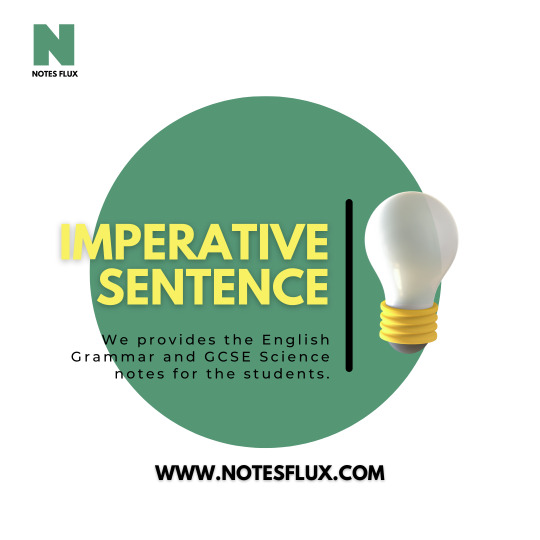
An imperative sentence is a declarative sentence that is used for commanding, requesting, or advising. In other words, it expresses a command. The speaker is typically the person who orders or advises.
A positive imperative sentence would be "Do not be afraid." A negative imperative sentence would be "Do not forget your keys." Some examples of an imperative sentence are:
1. "Close the door."
2. "Fill out this form and send it to us."
0 notes
Photo
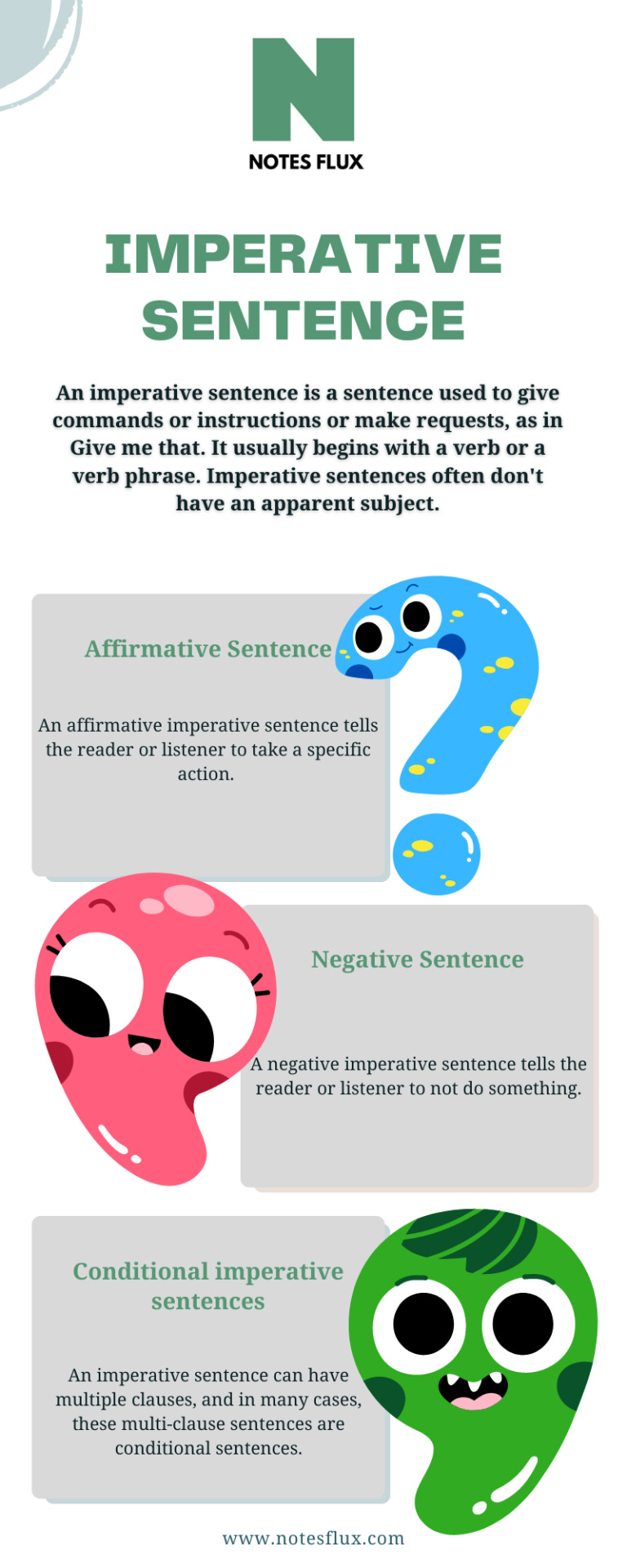
Imperative sentence is a type of sentence which gives instructions, commands or tells people what to do.
There are two types of imperative sentences: positive and negative. Positive imperative sentences tell people what to do or give instructions. For example: "Put the pen down now!" Negative imperative sentences are telling people not to do something or prohibiting them from doing something. For example: "Don't think that this is an easy test."
An interrogative imperative sentence is when someone asks someone else for instructions. For example: "Can you please put the pen down now?"
0 notes
Photo

In English, a way of forming shorter words is called clipping. Word formation where some syllables of an existing, multi-syllable word are dropped (removed) to create a shorter word is called “clipping”. The shorter word formed by clipping has the same meaning as the original word. The new, shorter word is easier to write and pronounce, while retaining the meaning of the original word. This process is also called clipping word formation, or clipped word formation.
0 notes
Audio
Clipping is a method of producing shorter words in English. Clipping is a word formation in which some syllables of a multi-syllable word are dropped (removed) to generate a shorter word. Clipping creates a shortened word with the same meaning as the original. The new, shorter word is easier to write and speak while keeping the old meaning. Clipping word formation, or clipped word formation, is another name for this phenomenon.
0 notes
Photo

In English, a way of forming shorter words is called clipping. Word formation where some syllables of an existing, multi-syllable word are dropped (removed) to create a shorter word is called “clipping”. The shorter word formed by clipping has the same meaning as the original word. The new, shorter word is easier to write and pronounce, while retaining the meaning of the original word. This process is also called clipping word formation, or clipped word formation.
0 notes
Photo
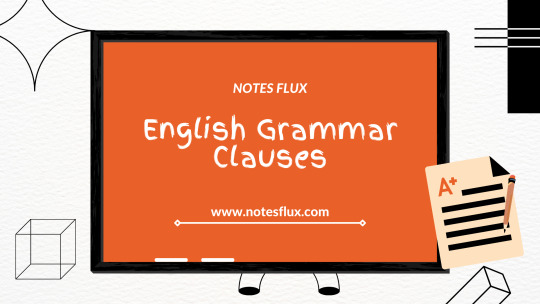
In English grammar, clauses can be thought of as building blocks of sentences. In English grammar, clauses consist of a verb and a subject (noun). Therefore, even a simple sentence in English will have a clause. It is important to note, clauses can be further divided in to two categories: Independent (main), and dependent (subordinate). Independent clauses can convey a complete thought and can stand on their own. In other words, an independent clause can form a complete sentence. In contrast, dependent clauses does not convey a complete thought and cannot stand on their own. A dependent clause will always need a main clause to support it.
0 notes
Link
0 notes
Photo

In English grammar, clauses can be thought of as building blocks of sentences. In English grammar, clauses consist of a verb and a subject (noun). Therefore, even a simple sentence in English will have a clause. It is important to note, clauses can be further divided in to two categories: Independent (main), and dependent (subordinate). Independent clauses can convey a complete thought and can stand on their own. In other words, an independent clause can form a complete sentence. In contrast, dependent clauses does not convey a complete thought and cannot stand on their own. A dependent clause will always need a main clause to support it.
0 notes
Photo

In English, sentences you write can be of different types depending on what ideas they convey to the reader. One of those types is Imperative. Now, the obvious question is: “what is imperative sentence?” Imperative sentences are used for giving orders, or advice; instructions, or suggestions; extending invitations and making requests. Imperative sentences are usually written using the present simple tense of a verb. The subject in an imperative sentence is not included because it is implied.
0 notes
Photo

In English, imperative sentences the sentences that express a command, suggestion, request, instruction or invitation. Imperative sentences are one of four types of sentences you can use in the English language. Further, imperative sentences can be written in “affirmative” (or “positive”), “interrogative” or “negative” forms. Positive (affirmative) imperative sentences are written using affirmative verbs. Among other forms of imperative sentences, positive imperative sentences are simplest, and are more commonly used.
0 notes
Photo
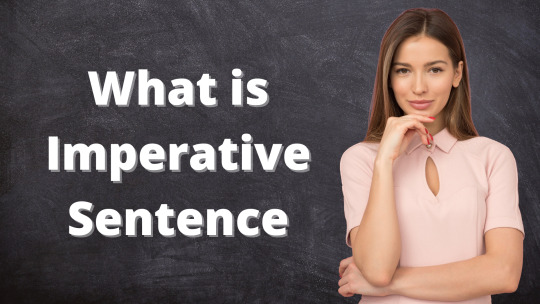
In English, sentences you write can be of different types depending on what ideas they convey to the reader. One of those types is Imperative. Now, the obvious question is: “what is imperative sentence?” Imperative sentences are used for giving orders, or advice; instructions, or suggestions; extending invitations and making requests. Imperative sentences are usually written using the present simple tense of a verb. The subject in an imperative sentence is not included because it is implied.
0 notes
Photo
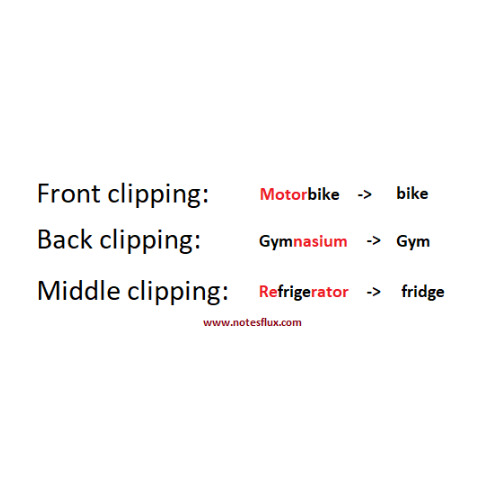
In English, a way of forming shorter words is called clipping. Word formation where some syllables of an existing, multi-syllable word are dropped (removed) to create a shorter word is called “clipping”. The shorter word formed by clipping has the same meaning as the original word. The new, shorter word is easier to write and pronounce, while retaining the meaning of the original word. This process is also called clipping word formation, or clipped word formation.
0 notes
Text
English grammar clauses
In English grammar, clauses can be thought of as building blocks of sentences. In English grammar, clauses consist of a verb and a subject (noun). Therefore, even a simple sentence in English will have a clause. It is important to note, clauses can be further divided in to two categories: Independent (main), and dependent (subordinate). Independent clauses can convey a complete thought and can stand on their own. In other words, an independent clause can form a complete sentence. In contrast, dependent clauses does not convey a complete thought and cannot stand on their own. A dependent clause will always need a main clause to support it.
0 notes
Photo

In English, imperative sentences the sentences that express a command, suggestion, request, instruction or invitation. Imperative sentences are one of four types of sentences you can use in the English language. Further, imperative sentences can be written in “affirmative” (or “positive”), “interrogative” or “negative” forms. Positive (affirmative) imperative sentences are written using affirmative verbs. Among other forms of imperative sentences, positive imperative sentences are simplest, and are more commonly used.
0 notes